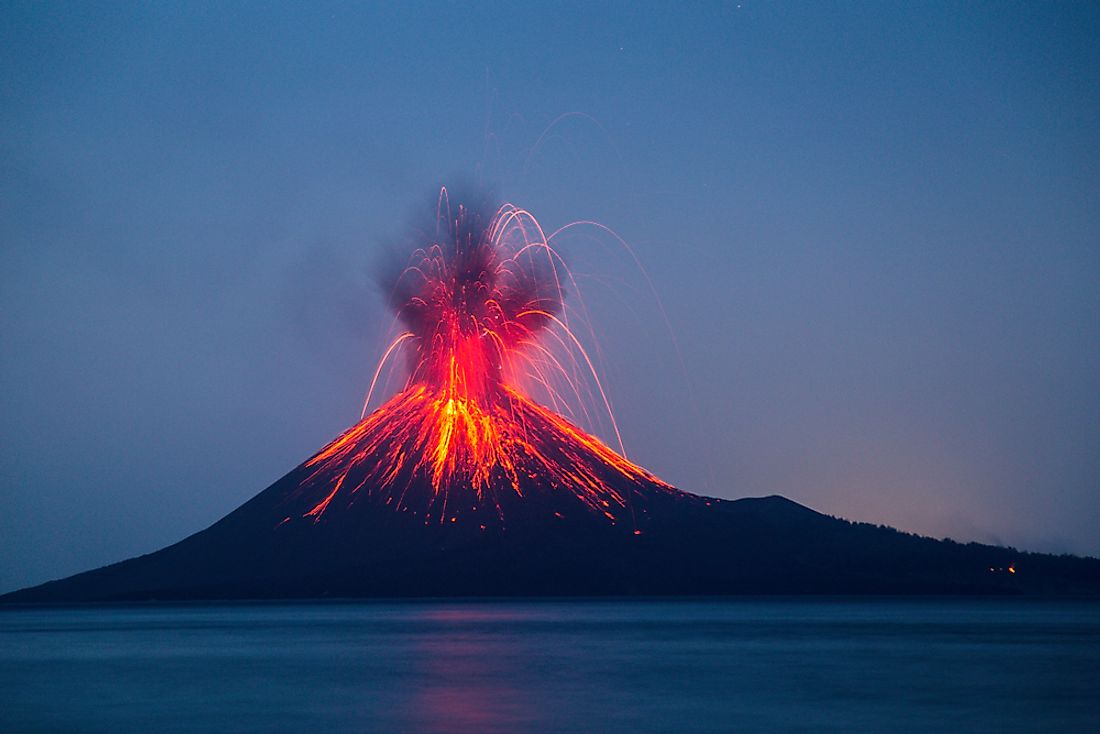Submarine Volcanoes And Their Role In Climate Change And Ecology

5. Notable Submarine Volcanoes
Submarine volcanoes are fissures in the surface of the Earth through which the magma can erupt, and they account for 75% of the output of the material. They are located in the deep ocean and the seas, but some of them can be found in the shallower waters as well. Submarine volcanoes are also found near the tectonic plate movements, which are known as ocean ridges. Some of the most notable submarine volcanoes are Piton de la Fournaise on Reunion Island, which is the biggest volcano on the Earth as it was 6,600 meters tall and had a diameter of 220 kilometers. Because of its unstable nature, it has formed huge landslides. Another volcano is Krakatoa, which erupted in the year 1883 is a submerged caldera and is located between Java and Sumatra in Indonesia. Kavachi was a submarine volcano which erupted in the Solomon Islands, and has erupted nine times since the year 1950. An active volcano named Monowai Seamount, off the coast of New Zealand near Tonga, erupted at least eight times since the year 1977. This volcano was 1,000 meters high and 200 meters below the sea level.
4. Greenhouse Gas Release
The magma which erupts from these volcanoes releases many harmful gasses as some eruptions have added 250 megatons of gas into the upper atmosphere. The significant amount of sulfur dioxide, carbon dioxide, hydrogen halides and hydrogen sulfide is released into the air. Submarine volcanoes releases a greater amount of carbon dioxide into the air which is estimated around 180 to 440 million tons. The Sulfur Dioxide emission causes volcanic smog and plays a greater role in the ozone depletion. Hydrogen Sulfide is a toxic gas, which causes irritation in the upper respiratory tract and can cause a human to fall unconscious or die in an hour. Hydrogen halides cause acid rain, and it can also poison drinking water supplies, grazing land and the agricultural crops.
3. Island Formation
Submarine volcanoes can also be responsible for island formation, as recently a new island was formed in the South Pacific after a volcano erupted in Tonga. This island is 500 meters and was formed in the month of December of 2014 with the Hunga Tonga Volcano. This showed sediments, rock formation and it also borders the underground volcano. In 2013, another volcanic eruption was noticed in Japan, which formed another island as it joined the larger island of Nishino-Shima. Many of the islands all across the Earth's oceans, especially the Pacific, have been formed as a result of volcanic activity.
2. Hydrothermal Vents, Volcanic Habitats, and Biodiversity
Hydrothermal vents are being found near the volcanic active areas. These exist because the Earth is geologically active and has a large amount of water in its crust. Even the ocean ecosystem is dependent on the presence of hydrothermal vents, which releases mineral-rich fluids from the sea floor. The species which are found here are Giant Tube Worms, eel-pout fish, hydrothermal octopuses, mussels, limpets, and clams.
1. Environmental Threats and Human Danger
Active submarine volcanoes also pose a threat to the plants and animals as the hot lava kills them. Even the aquatic life is in danger due to the change in temperature, acidic level or an effect to food supply, which kills the fishes. It also affects the human life as it makes impossible for humans to breathe, causes headaches and fatigue, and contributes to crop losses and famines.











